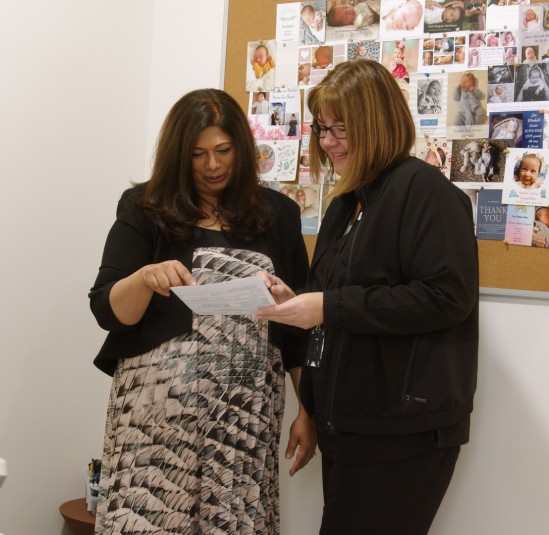There are two main classifications of vaginismus; primary vaginismus occurs when vaginal penetration has never been achieved, and secondary vaginismus occurs when vaginal penetration has occurred but is no longer possible.

Dr Chandrika Parmar is a renowned fertility specialist, with over 15 years of experience in artificial reproductive techniques, fertility assessment, treatment and surgery. She believes in a compassionate and holistic approach to fertility care.
Vaginismus is a condition characterised by involuntary contractions of the pelvic floor muscles surrounding the vagina. These spasms can make penetration—whether during intercourse, a gynaecological exam, or even the insertion of a tampon—painful or even impossible. For some patients, the physical nature of this condition may be deeply intertwined with psychological factors such as past trauma, making it central to the discussion of women’s health and fertility.
The causes of vaginismus can be multifaceted, including past trauma, fear of pain, anxiety, or certain medical conditions. For some women, it might arise after years of normal sexual function, while for others, it might have been a lifelong issue. Despite its prevalence, vaginismus remains veiled in silence and stigma, often leading women to suffer alone. Additionally, there isn’t enough discussion within today’s media discourse – I want to give a voice to my patients, and to anyone reading this who may be suffering, we can help you.
The first step in managing vaginismus is accurate diagnosis, which requires a sensitive and thorough approach. As a fertility specialist, I emphasise the importance of a comprehensive evaluation to rule out other medical conditions and to understand the psychological aspects at play. Once diagnosed, a multi-disciplinary treatment approach is often most effective.
My clinic offers a new model of care that brings together Fertility, Physio and Sexology to ensure a holistic view to offer the best possible outcomes.
Pelvic Floor Physical Therapy: A specialised physical therapist can teach exercises to relax and strengthen the pelvic floor muscles, gradually reducing the involuntary spasms.
Counselling and Psychotherapy: Psychological support can play a crucial role. Cognitive-behavioural therapy (CBT) and other therapeutic approaches can help address underlying fears, anxieties, or past traumas contributing to the condition.
Gradual Desensitisation: Using vaginal dilators of increasing sizes, women can learn to gradually acclimate their muscles to insertion, reducing the pain and fear associated with penetration.
Medical Interventions: In some cases, vaginal procedures, such as a hymenectomy may be advisable; this helps with reducing discomfort of penetration. Additionally, trying self-insemination or artificial reproductive techniques (ART) under general anaesthetic can be great options for those trying to get pregnant and suffering from vaginismus.
Education and Communication: Open, honest discussions about sex, anatomy, and the emotional aspects of vaginismus are essential in providing support to anyone suffering. Education can promote greater awareness, empowerment and action in helping women suffering.
Living with vaginismus can be an isolating experience. Many women feel ashamed or embarrassed to talk about their condition, fearing judgment or misunderstanding. This silence can exacerbate feelings of loneliness and helplessness. As a fertility specialist who has supported thousands of patients with vaginismus, I want to emphasise that you are not alone.
Building a Support Network: Whether it’s through support groups, online communities, close friends and family, and your significant other, connecting with others who understand your experience can be incredibly validating. Hearing stories of others who have successfully managed or overcome vaginismus can provide hope and practical advice.
Partner Involvement: For women in relationships, involving partners in the treatment process can be immensely beneficial. Educating partners about the condition, encouraging open communication, and involving them in therapy sessions can foster understanding and trust and patience, creating a safe and supportive environment in the process.
Self-Compassion and Patience: Overcoming vaginismus is a process that requires time, patience, and self-compassion. Celebrate small victories and be gentle with yourself. Understand that setbacks are part of the journey and not a reflection of your worth or effort.
Raising Awareness: Raising awareness about vaginismus can help break the silence and stigma surrounding the condition. Sharing your story, if you feel comfortable, can contribute to a broader understanding and encourage others to seek help.
Professional Support: You don’t have to navigate this journey alone. If you are suffering from vaginismus, or are unsure, seek help from professionals, such as myself who are knowledgeable and compassionate. As a fertility specialist, I work alongside your general practitioner, sexologist, physiotherapist, or psychologist; this makes a significant difference in your journey toward overcoming vaginismus.
Vaginismus is a condition that requires a holistic, compassionate approach to treatment. By understanding the nature of the condition and exploring various therapeutic options, women can find relief and reclaim their sexual and reproductive health. Most importantly, recognising that you are not alone and seeking support can transform the experience of living with vaginismus. As a fertility specialist, I am committed to providing the care, support, and understanding needed to navigate this journey.

If you are wanting to have a consultation to discuss your situation, or you are ready to undertake a comprehensive fertility assessment, please book a consultation today.

